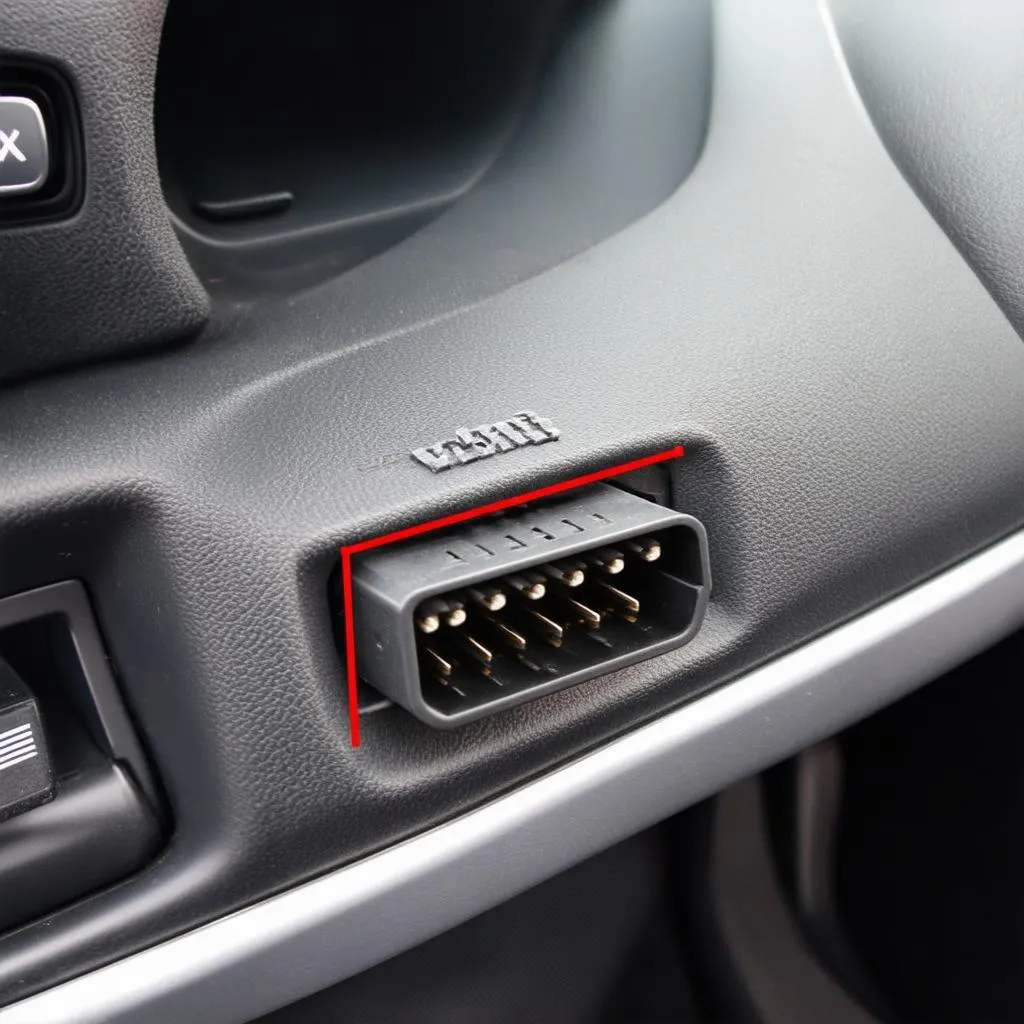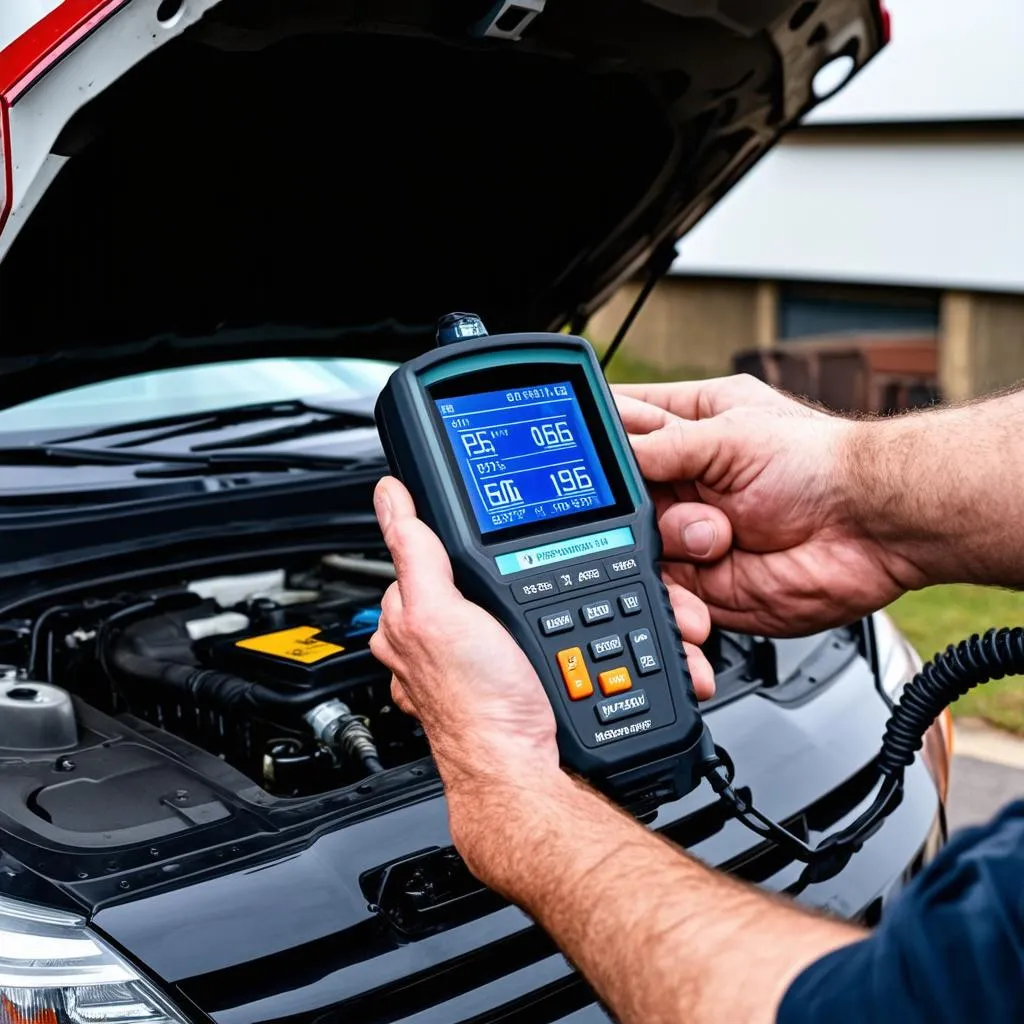“Knowledge is power,” whispered the old mechanic, his hands tracing the lines of a vintage Mustang. He was right, especially when it comes to your car. In a world dominated by technology, understanding your vehicle’s inner workings is no longer a luxury but a necessity. And that’s where the Obd Ii Meter comes in – your key to unlocking your car’s secrets.
What is an Obd Ii Meter and Why Should I Care?
Imagine this: your check engine light decides to throw a party on your dashboard, right before a big date. Panic sets in. Do you ignore it and hope for the best? Or brace yourself for a hefty mechanic bill? An OBD II meter, my friend, could be your knight in shining armor.
In simple terms, an OBD II meter, also known as an OBD II scanner or code reader, is a diagnostic tool that plugs into your car’s OBD II port. This port, mandated in vehicles manufactured after 1996, acts as a data hub, providing a wealth of information about your car’s health.
Still not convinced? Here’s why you should care about OBD II meters:
- Early Detection: Think of it as a health checkup for your car. An OBD II meter can detect minor issues before they snowball into expensive repairs.
- Cost Savings: By diagnosing problems yourself, you can potentially save hundreds of dollars in mechanic fees.
- Peace of Mind: No more guessing games with your car’s health. Get real-time data and stay in control.
Demystifying the Obd Ii Meter: How it Works and What it Tells You
Remember the old mechanic and his love for knowledge? He once told me, “A car speaks to you, but you need to learn its language.” The OBD II meter acts as your translator.
When you plug the meter into the OBD II port (usually located under the dashboard), it communicates with your car’s computer, retrieving Diagnostic Trouble Codes (DTCs). These codes are like secret messages revealing what’s going on under the hood.
Here’s a glimpse of what an OBD II meter can reveal:
- Engine Performance: Monitor RPM, temperature, oxygen sensor readings, and more.
- Emissions Data: Check your catalytic converter efficiency and oxygen sensor performance.
- Transmission Status: Get insights into gear ratios, shift patterns, and potential issues.
- And much more: Depending on the meter’s sophistication, you can access data on ABS, airbags, and other critical systems.
 OBD II Port Location in a Car
OBD II Port Location in a Car
Choosing the Right Obd Ii Meter: From Basic to Brainiac
Just like cars, OBD II meters come in different shapes and sizes, each with varying capabilities.
- Basic Code Readers: These entry-level devices primarily read and clear DTCs. Perfect for DIY enthusiasts who want to diagnose simple issues.
- Bluetooth Scanners: Connect wirelessly to your smartphone or tablet, providing a more user-friendly interface and advanced features like data logging.
- Professional-Grade Scanners: Used by mechanics and serious car enthusiasts, these powerhouses offer comprehensive diagnostics, programming capabilities, and live data streaming.
So, how do you choose? Consider your budget, technical expertise, and desired functionality. For casual users, a basic code reader or a Bluetooth scanner might suffice. If you’re a serious gearhead, investing in a professional-grade scanner could be worthwhile.
Obd Ii Meters and Feng Shui: Finding Harmony on the Road
Interestingly, the concept of understanding your car’s energy aligns with the principles of Feng Shui. Just as a harmonious home promotes well-being, a balanced car can enhance your driving experience.
“A car is an extension of your personal space,” says Feng Shui Master Wei Ling, author of “The Art of Driving with Positive Energy.” “By maintaining its well-being, you invite positive energy into your journeys.”
While an OBD II meter isn’t a traditional Feng Shui tool, it empowers you to address your car’s needs, fostering a sense of harmony and balance on the road.
Beyond Diagnostics: The Hidden Potential of Obd Ii Meters
Here’s a secret: OBD II meters can do more than just read codes. They can unlock hidden features in your car, turning you into a tech-savvy driver.
- Customize Your Driving Experience: Some advanced scanners allow you to adjust settings like automatic door locking, daytime running lights, and even throttle response.
- Track Your Fuel Efficiency: Monitor your driving habits and identify areas for improvement to save money on gas.
- Turn Off Annoying Warning Lights: Once you’ve addressed the underlying issue, use your OBD II meter to clear those pesky warning lights.
Frequently Asked Questions about Obd Ii Meters
Q: Will any OBD II meter work with my car?
A: Almost all cars manufactured after 1996 in the US are OBD II compliant. However, some European cars might use slightly different protocols.
Q: Can I use an OBD II meter to change my car’s mileage?
A: Tampering with odometer readings is illegal. Reputable OBD II meters are designed for diagnostic purposes only.
Q: I got a code, now what?
A: Don’t panic! Jot down the code and research its meaning online or consult a mechanic.
 Mechanic Using OBD II Scanner on a Car
Mechanic Using OBD II Scanner on a Car
Expanding Your Automotive Knowledge: More Resources on techcarusa.com
- Auto Meter OBD II: Delve deeper into the world of OBD II meters with our detailed guide. [Link to: https://techcarusa.com/auto-meter-obd-ii/]
- DIY OBD: Learn how to perform basic car diagnostics and repairs at home. [Link to: https://techcarusa.com/diy-obd/]
- ELM327 Bluetooth OBD Adapter: Explore the capabilities of this popular and affordable diagnostic tool. [Link to: https://techcarusa.com/eflm327-bluetooth-obd-adapter-how-to-use-with-linux-kayak/]
Take Control of Your Car’s Destiny
Just as a skilled captain navigates the seas, an informed car owner can confidently navigate the road ahead. An OBD II meter is your compass and map, guiding you towards a smoother, safer, and more economical driving experience.
Need help choosing the right OBD II meter or deciphering those cryptic codes? Contact our team of automotive experts via Whatsapp at +84767531508. We’re here to help you unlock your car’s full potential.